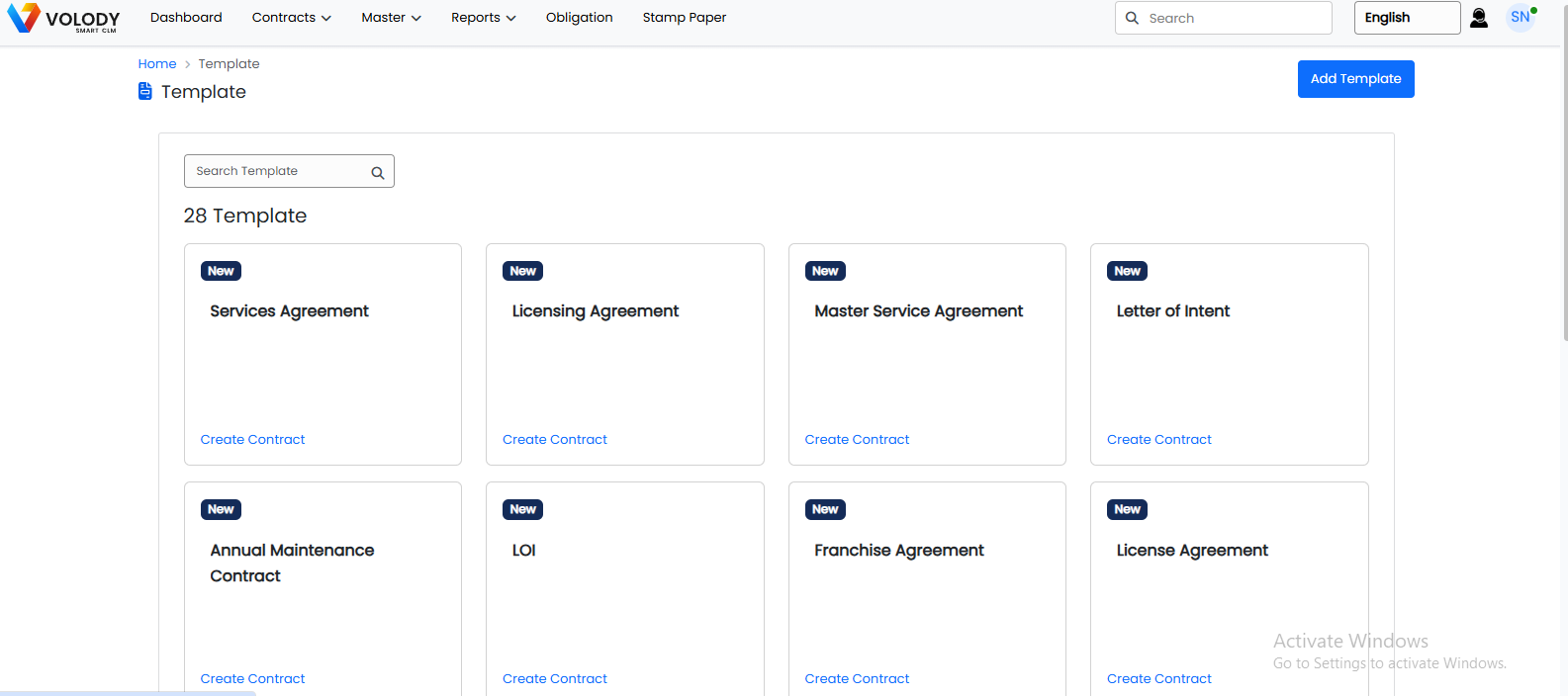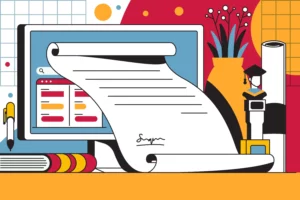What is a contract?

that the law treats as a binding agreement between two or more people. It lays out the terms of an agreement and shows the obligations of each party. For an agreement to be effective, it must follow specific rules to be enforceable by law.
An agreement usually needs to be written down. Sometimes, oral contracts are okay in some cases. All parties involved must want to make a legal deal. There also has to be an exchange of something valuable, known as “consideration.” This could be money, items, services, or even a promise to do something or not do something. An agreement shows a “meeting of the minds.” This means each person understands and agrees to the terms. This makes it a legal agreement.
Related Article: How to Simplify Contract Approvals? A Comprehensive Guide
How to write a contract

A well-drafted contract drafting is more than just a collection of legal clauses; it’s a tool for building trust and ensuring clarity between parties. While legal accuracy is critical, the way an agreement is written can significantly influence its effectiveness. Poorly written agreements can create confusion, delay negotiations, and even discourage signatories.
To streamline the agreement process and enhance compliance, follow these best practices:
1. Focus on Simplicity and Clarity
- Use plain language that is easy to understand, avoiding unnecessary legal jargon.
- Clearly outline roles, responsibilities, and expectations for all parties involved.
2. Highlight Critical Information
- Place essential terms, such as payment, timelines, or deliverables, upfront or in an appendix for easy reference.
- Ensure the most relevant clauses are easy to locate and comprehend.
3. Be Concise and to the Point
- Avoid overly long or repetitive sections.
- Contact Drafting each clause with precision to maintain focus and readability.
4. Know Your Audience
- Adapt the tone and structure of your agreement to the other party’s level of expertise.
- Aim for a user-friendly design that guides readers towards key outcomes.
5. Plan for Efficiency
- Reflect on past negotiations to identify common pain points.
- Prepare fallback clauses for terms you’re willing to adjust to speed up the agreement process.
6. Benchmark for Improvement
- Regularly review your contract templates for clarity, length, and effectiveness.
- Incorporate feedback from users to refine language and structure over time.
Related Article: Contract Versions: A Guide to Easily Tracking Each Update
Common Pitfalls in Contract Drafting and How to Avoid Them

Even skilled professionals can make simple mistakes when contract drafting. These mistakes can lead to costly issues and may put the whole contract at risk. If we understand these errors, we can find ways to avoid them. This will help ensure that agreements are strong.
The next sections will highlight common mistakes in agreement writing, from unclear wording to low payment, and give useful tips on how to avoid them.
- Ambiguous Language: Vague terms or unclear phrasing can lead to misinterpretation.
- Missing Key Clauses: Omitting essential elements like dispute resolution or termination clauses.
- Overlooking Jurisdiction: Failure to specify governing law can complicate enforcement.
- Inconsistent Terminology: Using varied terms for the same concept can create confusion.
- Ignoring Updates: These do not reflect recent laws or changes in regulations.
To mitigate these pitfalls, ensure clear, precise language and use templates vetted by legal professionals. Include all essential clauses and tailor them to the agreement’s purpose. Always specify governing laws and maintain consistency in terminology. Regularly review agreements to align with current laws and business needs, leveraging contract lifecycle management (CLM) tools for better oversight.
Related Article: Contract Termination: Tips to Avoid Legal Issues
Steps to Simplify the Contract Drafting Process

Making clear and simple agreements can be easy. You can follow a step-by-step method. Using helpful tools can also make things simpler and help avoid mistakes.
Here are the key steps to make good agreements. First, gather the information you need. Next, ensure clarity so that the agreements are simple to read and understand. Each step is crucial to safeguard your interests and create strong business relationships.
- Use Templates: Start with pre-approved templates to ensure consistency and eliminate repetitive contract drafting. Define the purpose, scope, and key terms upfront for clarity.
- Keep it Clear: Avoid complex legal jargon. Write concise, easy-to-understand clauses that leave no room for misinterpretation.
- Leverage Technology: Automate contract creation with tools like Volody. Features like clause libraries, template editors, and AI-powered compliance checks ensure efficiency and accuracy.
- Collaborate Efficiently: Use cloud-based platforms to allow multiple stakeholders to review and edit agreements simultaneously. This eliminates version control issues and speeds up negotiations.
- Focus on Key Clauses: Highlight critical terms such as payment schedules, deadlines, and deliverables. Make essential clauses easy to locate to improve understanding and compliance.
- Automate Compliance: Regularly review your process for bottlenecks and inefficiencies. Update templates and workflows based on feedback and evolving business requirements.
- Integrate eSignatures: Streamline the signing process with built-in eSignature tools like Volody Sign. This reduces delays and keeps agreements moving forward.
- Centralize Storage: Store all contracts in a centralized, searchable database. Tag agreements with metadata for quick access to terms and agreements.
Related Article: What is an E-Signature? A Comprehensive Guide to E-sign in 2024
Create Your Own Contract

If you’re looking to streamline the process of contract drafting, and creating legally binding contracts, you’re in the right place. While there are multiple ways to contract drafting, it’s important to focus on the creation process itself—not just the content.
Traditionally, many people turn to tools like Microsoft Word. Given its widespread use—available on over a billion devices globally—it’s no surprise that Word has become a go-to for contract drafting. However, Microsoft Word is not designed with contract drafting in mind.
Contracts in Word often involve manual copy-pasting from templates, leading to inconsistencies, errors, and time wasted on version control. These inefficiencies can result in misaligned terms, confusion between parties, and operational delays.
But there’s a smarter way: Automate Contract Drafting with Volody
Our in-browser contract editor is purpose-built for seamless contract creation, combining:
- Intuitive template design,
- Integrations for your existing tools,
- Built-in eSignatures, and
- A dynamic repository on a flexible data layer for querying your contract data anytime.
With Volody, you can eliminate the manual hassle, reduce errors, and ensure that your contracts are legally sound and easy to manage.
Related Article: What Is Contract Negotiation? Clear Strategies & Expert Tips
Three Ways to Create a Contract with Volody
- Start from Scratch: new contract drafting directly in our editor. No formatting headaches, no compatibility issues.
- Upload Existing Contracts: Drag and drop a PDF into Volody to instantly digitize and manage your document.
- Automate with Templates: Use Volody’s contract generator to create dynamic workflows. Generate agreements in seconds, ensuring consistency and compliance every time.
Volody’s platform is designed to simplify and enhance every stage of the contract lifecycle. From contract drafting to signing and storage, our solution ensures that your contracts are not only legally robust but also easy to manage and retrieve.

Volody is a simple platform for writing contracts. This contract management software helps users easily go through the contract lifecycle. It provides clearer contract language, which lowers the risk of errors. With Volody, making an effective agreement becomes easier, giving unmatched authority in contract drafting. Users can change templates for different agreements, like employment agreements or business agreements. The platform makes the process smooth, from negotiation time to the final document presentation. Volody helps users manage key elements, such as clauses and terms, with clarity. This way, the obligations of each party are clearly defined and enforceable.
Related Article: What is Contract Management Software?
Conclusion
Mastering contract drafting requires attention and careful planning. To create good agreements, it helps to know the basics and write clearly. You should avoid common mistakes. It is essential not to overlook standard clauses or fail to consider future scenarios.
To make contract drafting easier, start by collecting all the needed information. Write clearly and use tools like Volody for assistance. Ensure that your agreements have key elements and consider how they might change after signing. For expert help and simpler contract creation, look at Volody’s contract templates today.
FAQs
What are the most important elements to include in any contract?
An effective contract, whether a simple agreement or a complex legal document, does several things. It names all the parties involved. It outlines the terms of the agreement. This includes the obligations of each party, payment details, and deadlines. It also explains how to resolve disputes. Additionally, it covers what happens if there are breaches and includes information on attorney fees.
Can a contract be modified after it’s been signed?
Yes, all parties need to agree to any changes, and these changes should be in writing. If there is a disagreement about these changes, a court of law often handles it. However, the agreement can also allow for other ways to solve problems, like mediation or arbitration. It’s important to keep in mind that oral agreements to change an agreement can be difficult to enforce.





